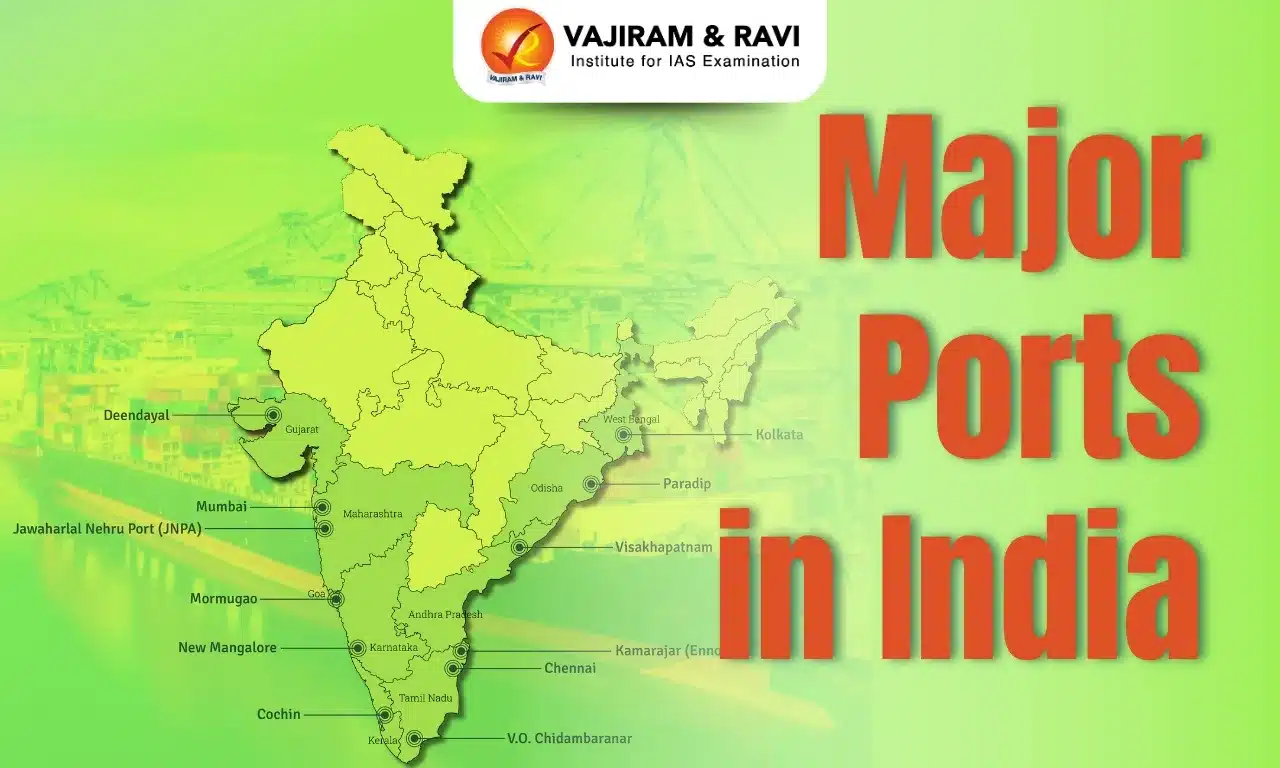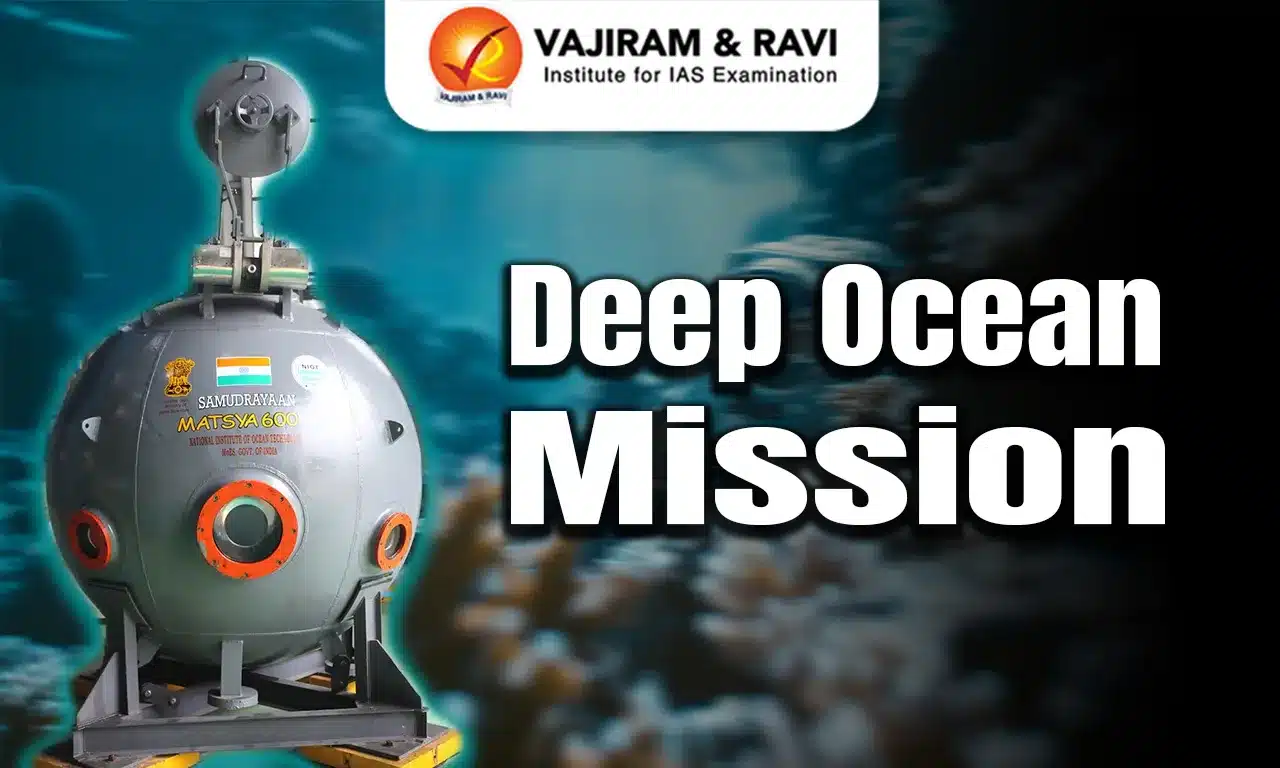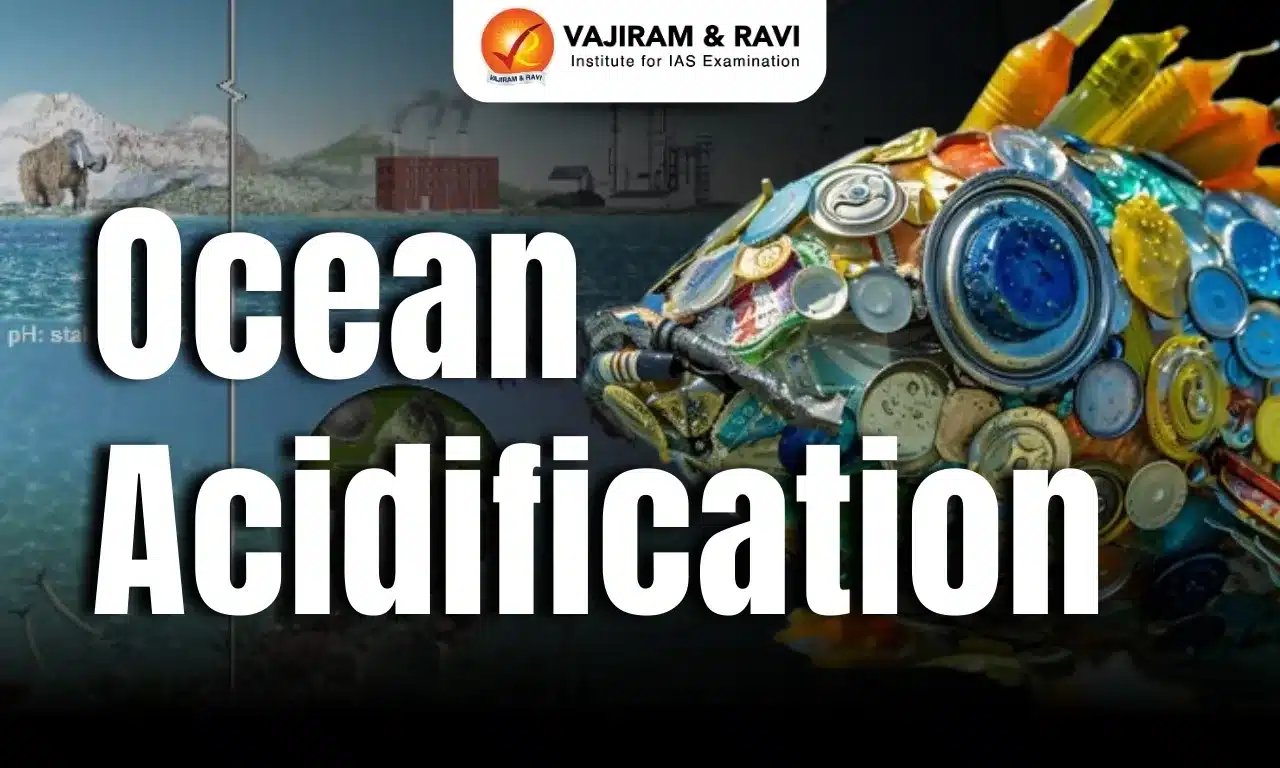India’s coastline spans 7,517 km, hosts 13 major ports (including proposed Vadhavan Port) and over 200 minor ones. Major ports handle 95% of India’s trade by volume and 70% by value. These ports facilitate critical trade, handling various goods like petroleum, coal, iron ore, textiles, and automobiles, with strategic geopolitical significance in global maritime routes.
Major Ports in India includes: West coast ports- Mumbai, Kandla, Mangalore, Jawaharlal Nehru Port (JNPT), Mormugao, and Cochin; East coast ports-Chennai, Tuticorin, Visakhapatnam, Paradip, Kolkata, and Ennore.
Major Ports in India
Modern India’s maritime prowess manifests across all domains with its impressive 7,500 km coastline, 13 major ports, and 200 non-major ports, establishing it as an undisputed maritime powerhouse. With an annual handling capacity of 1,200 million tonnes, it supports 95% of trade by volume and 70% by value, leveraging India’s strategic Indian Ocean location.
- The Ministry of Ports, Shipping, and Waterways oversees major ports, while minor ports are managed by states.
- Private sector participation in major ports is facilitated through concession agreements.
- New Major Port: On 19 June 2024, the Government approved a 13th major port at Vadhavan, Maharashtra, with a 74:26 shareholding between the Jawaharlal Nehru Port Authority and Maharashtra Maritime Board.
- Under the Maritime India Vision 2030, cargo capacity at major ports is projected to reach 2,200 MMTPA by 2030.
Major Ports in India List
There are 12 major ports in India divided into the Western and Eastern coasts of the Peninsula. The list of major ports in India are as follows:
| S.N | Port Name | State |
| 1. | Deendayal Port (Kandla Port) | Gujarat |
| 2. | Mumbai Port Trust | Maharashtra |
| 3. | Jawaharlal Nehru Port Trust (JNPT) | Maharashtra |
| 4. | Port of Mormugao | Goa |
| 5. | New Mangalore Port | Karnataka |
| 6. | Syama Prasad Mookerjee Port (Kolkata Port) | West Bengal |
| 7. | Kochi (Cochin) Port | Kerala |
| 8. | Chennai Port | Tamil Nadu |
| 9. | Kamarajar Port (Ennore Port) | Tamil Nadu |
| 10. | Paradip Port | Odisha |
| 11. | Visakhapatnam Port | Andhra Pradesh |
| 12. | Tuticorin Port | Tamil Nadu |
| 13. | Vadhavan Port (Under construction) | Maharashtra |
| – | Port Blair (removed status) | Andaman & Nicobar Islands |
Note: Port Blair is no longer a major port. The Indian government removed Port Blair’s major port status in 2017 due to a lack of container traffic.
Major Ports on Western Coast of India
India’s western coast hosts major ports like Deendayal (Kandla), Mumbai, JNPT, Vadhavan*, Mormugao, New Mangalore, and Cochin, which are vital for trade and cargo handling. These ports facilitate bulk exports, container traffic, and regional economic growth, enhancing India’s geopolitical presence and maritime trade across global routes.
Deendayal Port (Kandla Port)
Deendayal Port, formerly Kandla Port, is a major seaport in Gujarat’s Kutch district, established in 1955 and it was renamed as Deendayal Port in 2017 under Indian Ports Act, 1908.
- Strategic Location: Situated in Kandla Creek, 90 km from the Gulf of Kutch, it is a protected natural harbour and a critical trade gateway.
- Cargo Handling: India’s largest port by cargo volume, handling approximately 132.3 million metric tonnes (MMT) in 2023–24.
- Export and Import: Specializes in bulk liquid and dry cargo, including petroleum, chemicals, grains, salt, and textiles.
- A Satellite port (one that already exists or is created near a port that is reaching capacity) is proposed between Tuna-Tekra and Kandla Creek.
- Trade Facilitation: The port will enhance trade through key corridors, including:
- India-Middle East-Europe Economic Corridor (IMEEC).
- International North-South Transportation Corridor (INSTC).
Mumbai Port Trust
Mumbai Port Trust, formerly known as Bombay Port Trust (BPT), established in 1873, is a historic maritime hub located in Mumbai, Maharashtra. Strategically situated on the west coast of India, the port lies within a natural deep-water harbour, providing easy access to international shipping routes.
- Strategic Location: Located on the Arabian Sea, the port enjoys proximity to major international shipping routes. Serves as a gateway for trade in western and central India.
- Major Exports: Textiles, machinery, chemicals, and petroleum products.
- Major Imports: Crude oil, electronic goods, and metals.
Jawaharlal Nehru Port Trust (JNPT)
Jawaharlal Nehru Port Trust(JNPT), located in Navi Mumbai, Maharashtra, is India’s largest container port, handling over 55% of the country’s container traffic. Positioned along the Arabian Sea, it offers efficient access to major international shipping lanes and benefits from its proximity to Mumbai, Navi Mumbai, and Pune.
- Export: Textiles, pharmaceuticals, chemicals
- Imports: Key raw materials and machinery for manufacturing.
- Significance: JNPT’s strategic importance extends to India’s trade policies, aiming to reduce dependency on China and strengthen local production and export capabilities.
Vadhavan Port
Vadhavan Port, a 13th Major port, is a transformative infrastructure project aimed at enhancing India’s maritime trade capabilities. Located in Palghar, Maharashtra, approximately 100 km north of Mumbai, the port was recently (2024) approved and will become one of India’s largest upon its completion.
- Features: It will feature an artificial harbour protected by breakwaters, designed to accommodate large vessels like Panamax and Capesize ships.
Port of Mormugao
Mormugao Port, established in 1885 in Goa, is a key maritime hub, originally developed for iron ore exports. Designated a Major Port in 1964, it has grown significantly, especially during peak global demand for iron ore.
- Export and Import Commodities: Mormugao Port in Goa is a vital maritime hub handling key imports like coal, scrap, and potassium carbonate, and exports such as steel, iron ore, frozen fish, liquor, and pig iron.
- Recent Developments: Mormugao Port is set to open a new International and Domestic Cruise Terminal by March 2025, aiming to attract 1.5 million tourists by 2030.
- Environmental Initiatives: First Indian port listed on the Environmental Ship Index (ESI) in October 2023.
New Mangalore Port
New Mangalore Port, also known as New Mangalore Port Trust (NMPT), is a major all-weather port in Panambur, Mangalore, Karnataka. Established in 1975, it is the only major port in Karnataka. Covering approximately 480 hectares, it features the deepest inner harbour on the west coast of India.
- Export: Iron ore concentrates and pellets, iron ore fines, manganese, granite stones, coffee, cashew nuts, and containerised cargo.
- Imports: Crude oil, petroleum products, LPG, wood pulp, timber logs, and fertilisers.
Kochi (Cochin) Port
Cochin Port, located in Kochi, Kerala, is a major maritime facility on the Arabian Sea, connecting the Indian Ocean and the Laccadive Sea. Its history dates back to 1341 AD when a flood from the Periyar River created a navigable harbour.
- Features: Cochin Port features India’s largest International Container Transshipment Terminal (ICTT) and the Vallarpadam Terminal for enhanced cargo handling.
- Export and Import: Exports seafood, spices, rubber, and coir products, while importing crude oil, coal, fertilisers, and machinery, supporting regional energy needs and international trade.
Ports on the Eastern Coast of India
Ports on India’s eastern coast, include Tuticorin, Ennore, Chennai, Haldia, Kolkata, Paradip, Visakhapatnam, and Port Blair. These ports handle diverse commodities like crude oil, coal, seafood, and textiles, supporting industries and exports. These ports enhance connectivity and support regional trade strategies like the Chennai-Vladivostok Maritime Corridor.
V.O. Chidambaranar Port Trust (Tuticorin Port)
V.O. Chidambaranar Port, formerly known as Tuticorin Port, is a major seaport in Thoothukudi, Tamil Nadu, India. Declared a major port on July 11, 1974, it is the second-largest port in Tamil Nadu and the third-largest container terminal in India.
- History: Named after V.O. Chidambaram Pillai, a renowned freedom fighter and maritime pioneer, the port honours his legacy as “Kappalottiya Thamizhan” (The Tamilian man who rode the ship).
- Export and Import: V.O. Chidambaranar Port handles diverse imports like crude oil, coal, fertilisers, and machinery while facilitating exports of seafood, textiles, cement, and granite products to global markets.
Chennai Port
Chennai Port, established in 1881, is the second-largest container port in India, strategically located on the east coast. It has evolved from handling primarily oil and motor imports to managing over 60 million tonnes of cargo annually, enhancing trade and economic growth in Tamil Nadu.
- Geopolitical Considerations: The Chennai-Vladivostok Maritime Corridor (CVMC) enhances trade between India and Russia, reducing travel time from 40 to 24 days.
- It strengthens India’s position in the Indo-Pacific, supporting energy imports and counterbalancing China’s influence.
- Export and Imports: Chennai Port handles a range of imports, including crude oil, metals, and machinery, while exporting automobiles, textiles, and engineering goods.
Kamarajar Port Ltd.(Ennore Port)
Kamarajar Port, formerly Ennore Port, is located 18 km north of Chennai. It is India’s first corporatised major port. Established in 2001 to support thermal coal transport for the Tamil Nadu Electricity Board, it operates under Kamarajar Port Limited, functioning outside traditional tariff regulations.
- Export and Import: Kamarajar Port supports automobile exports and imports key commodities like thermal coal, crude oil, LNG, fertilisers, and bulk goods vital for industry.
Visakhapatnam Port
Visakhapatnam Port in Andhra Pradesh, established in the early 20th century, has evolved into one of India’s busiest ports. Originally built to export manganese ore, the port’s expanded capacity reflects its growing economic significance.
- Cargo handling: In May 2024, Visakhapatnam Port set a record for cargo handling surpassing its previous record. It also achieved its highest cargo handling volume in 45 days in FY 2024-25, with notable records in bauxite and manganese ore handling.
- Export and Import: Major exporter of seafood, iron ore, steel, and thermal coal. In FY 2023-24, it led India’s seafood exports.
- The port imports agricultural products, chemicals, and machinery for various industries.
- Geopolitical Considerations: Visakhapatnam Port enhances India’s influence in the Indian Ocean Region, connecting to Southeast Asia and Central Asia.
- Its development supports India’s maritime strategy, strengthening ties with countries like Iran (Chabahar Port) and Myanmar (Sittwe Port) to counter China’s regional influence.
Paradip Port
Paradip Port, a key deep-water port in Odisha, lies at the Mahanadi-Bay of Bengal confluence. It became operational in 1966 as India’s eighth major port.
- Cargo Handling: As of FY 2023-24, Paradip Port achieved a record cargo throughput surpassing Deendayal Port in Gujarat and establishing itself as India’s largest major port.
- Export and Import: Exports like iron ore, thermal coal, and finished steel, and imports crude oil, petroleum products, and fertilisers.
Syama Prasad Mookerjee Port (Kolkata Port)
Kolkata Port, officially known as Syama Prasad Mookerjee Port, is India’s oldest operating port and the only major riverine port in the country. Situated in Kolkata, West Bengal, it is approximately 203 kilometres from the sea and was established by the British East India Company.
- Infrastructure Enhancements: The port comprises two main dock systems:
- Kolkata Dock System (KDS): Primarily handles container traffic.
- Haldia Dock Complex (HDC): Designed for larger vessels due to its deep-water capabilities.
- Export and Import: Exports tea, jute products, and textiles, and imports coal, fertilisers, and machinery, with direct shipping services enhancing trade with ASEAN countries.
Important Minor Ports of India
India’s maritime infrastructure is extensive, comprising 13 major ports and over 200 minor ports. The respective state governments manage minor ports through their maritime boards.
These ports are vital for local economies, facilitating trade and transportation along India’s 7,517 km coastline. Among the 200 minor ports, approximately 65 actively handle cargo. The rest may serve fishing vessels or ferry passengers. Some prominent minor ports in India are as follows:
- Azhikkal Port (Kerala)
- Belekeri Port (Karnataka)
- Kannur Port (Kerala)
- Kundapur Port (Karnataka)
- Dahej Port (Gujarat)
- Jafrabad Port (Gujarat)
- Jakhau Port (Gujarat)
- Kasargod Port (Kerala)
- Neendakara Port (Kerala)
- Pindhara Port (Gujarat)
- Ponnani Port (Kerala)
- Tellicherry/Thalassery Port (Kerala)
- Beypore Port (Kerala)
- Port Blair (A&N Islands)
Major Ports of India Significance
India’s major ports hold significant importance by handling 95% of foreign trade by volume, enhancing connectivity, preserving historical significance, advancing infrastructure through initiatives like Sagarmala, and adopting eco-friendly practices.
- Economic Impact: Major ports handle 95% of India’s foreign trade by volume and 70% by value, with 795 million tonnes of cargo handled in 2022-23. In July 2024, cargo traffic grew by 5.92%, reaching 70.08 million tonnes.
- Strategic Location: Positioned along key shipping routes, Indian ports boost connectivity between Asia, Europe, and Africa. Ports like Mumbai and Chennai are vital for trade between India, Iran, Russia, and other regions.
- Historical and Cultural Significance: Ports like Kolkata, established in 1870, have long been gateways for trade with Southeast Asia and Europe. They facilitated cultural interactions through ancient trade routes.
- Infrastructure Development: The Sagarmala Project and a 4.02% cargo growth in 2024 demonstrate significant investments in infrastructure. Cargo handling capacity at major ports has increased by 87% from 2014-15 to 2023-24.
- Environmental Considerations: Indian ports are adopting eco-friendly measures, including electric vehicles and digital solutions, to minimize environmental impact.
Major Ports of India Challenges
India’s major ports are vital for trade and economic growth but face challenges like inadequate infrastructure, poor connectivity, operational inefficiencies, regulatory hurdles, environmental issues, and labour shortages, impacting their competitiveness.
- Inadequate Infrastructure: Ports face dredging limitations, making them unsuitable for large vessels, and outdated equipment reduces efficiency.
- Connectivity Issues: Poor road, rail networks, and last-mile connectivity hinder smooth cargo evacuation and logistics.
- Operational Inefficiencies: Longer ship turnaround times and inefficient cargo handling delay operations and reduce productivity.
- Regulatory and Financial Barriers: Complex regulations and lengthy project timelines hinder timely project approvals and financing.
- Environmental Compliance Issues: Environmental challenges like spills and non-compliance lead to penalties and operational disruptions.
- Labour Issues: A shortage of skilled labour and inefficient management affect port productivity and service quality.
Major Ports in India UPSC PYQs
Question 1: Consider the following pairs : (UPSC Prelims 2023)
Port Well known as
- Kamarajar Port – first major port in India registered as a company
- Mundra Port – largest privately owned port in India
- Visakhapatnam – largest container port in India
How many of the above pairs are correctly matched?
- Only one pair
- Only two pairs
- All three pairs
- None of the pairs
Answer: (b)
Question 2: In India, the ports are categorized as major and nonmajor ports. Which one of the following is a nonmajor port? (UPSC Prelims 2009)
- Kochi (Cochin)
- Dahej
- Paradip
- New Mangalore
Answer: (b)
Last updated on June, 2025
→ UPSC Notification 2025 was released on 22nd January 2025.
→ UPSC Prelims Result 2025 is out now for the CSE held on 25 May 2025.
→ UPSC Prelims Question Paper 2025 and Unofficial Prelims Answer Key 2025 are available now.
→ UPSC Calendar 2026 is released on 15th May, 2025.
→ The UPSC Vacancy 2025 were released 1129, out of which 979 were for UPSC CSE and remaining 150 are for UPSC IFoS.
→ UPSC Mains 2025 will be conducted on 22nd August 2025.
→ UPSC Prelims 2026 will be conducted on 24th May, 2026 & UPSC Mains 2026 will be conducted on 21st August 2026.
→ The UPSC Selection Process is of 3 stages-Prelims, Mains and Interview.
→ UPSC Result 2024 is released with latest UPSC Marksheet 2024. Check Now!
→ UPSC Toppers List 2024 is released now. Shakti Dubey is UPSC AIR 1 2024 Topper.
→ Also check Best IAS Coaching in Delhi
Major Ports in India FAQs
Q1. Which is the oldest port in India?+
Q2. Which port has an artificial Harbour in India?+
Q3. Which port is known as Pearl of India?+
Q4. Which port is known as Diamond Harbor?+
Q5. Which is the deepest port in India?+
Tags: major ports in india quest





















